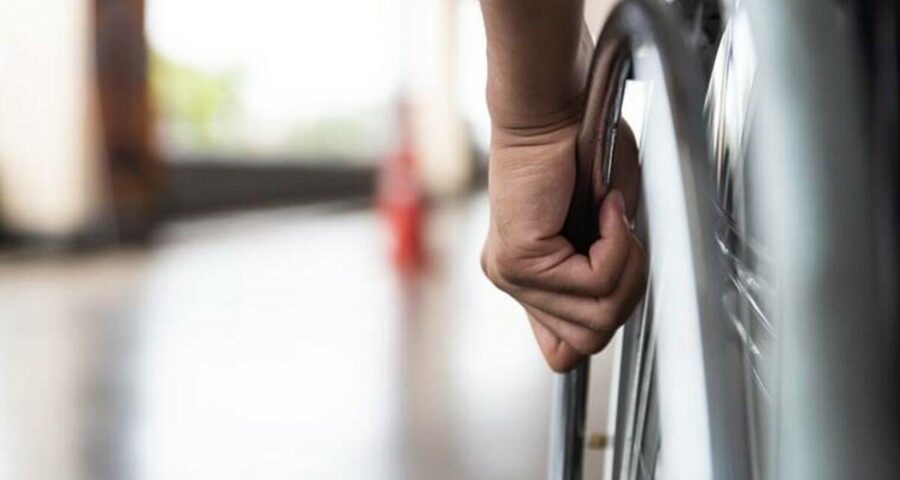Loss of access to healthcare, support systems, education, livelihood, and even basic food supplies are the ‘new normal’ for the vast majority of India’s disabled people.
Written by Arman Ali
The expenditure allocation in the Union Budget for persons with disabilities for the past few years has just been 0.04 per cent.
Even by conservative estimates of India’s population of persons with disabilities, which is 2.1 per cent as per Census 2011, this is grossly inadequate. What is more worrying is that allocations under important budget heads have either remained stagnant or have been slashed.
For instance, the allocation for Scheme for Implementation of Persons with Disabilities Act (SIPDA) has been reduced from Rs 315 crore in 2019-20 to Rs 252 crore in 2020–21. Likewise, the allocation for National Handicapped Finance and Development Corporation (NHFDC) has been reduced from Rs 41 crore in 2019-20 to Rs 0.01 crore in 2020–21.
Expenditure on both research on disability-related technology and the National Institute of Mental Health and Rehabilitation in FY 2020-21 is zero (down from Rs 20 crore in 2019-20). The allocation for the Indian Sign Language Research and Training Centre is also nil, down from Rs 5 crore in 2019-20. Meanwhile, the assistance for Disabled Persons for Purchase (ADIP) / Fitting of Aids and Appliances has stagnated at Rs 230 crore for the entire population of persons with disabilities for many years.
The National Centre for Promotion of Employment for Disabled People (NCPEDP), which held a nationwide pre-budget (2021-2022) consultation with people from across the disability sector, received several suggestions. Here are some of them:
1. Transparency in budgeting and planning
· Disability response planning and budgeting by all ministries
· Specific earmarking of budgets for disability under various central / state schemes of different ministries / departments as well as colleges and universities and specifically for sign language interpreters
· A separate section in the union budget for allocations made for persons with disabilities across departments and ministries.
2. Making education inclusive
· Smartphones/tabs and data packages to students with disabilities for accessing online education.
· Resources for recruitment and training of special educators in schools
3. Focus on public health
· Roll out a health insurance scheme for persons with disabilities irrespective of the economic strata to which they belong
4. Safeguarding livelihoods
· Increase allocation under NHFDC for generating entrepreneurial and self-employment opportunities among persons with disabilities
· Raise the quantum of State Disability Pension to Rs 1,500 per month per person with disability (uniform rate across India)
· Unemployment allowances for persons with disabilities who have lost their jobs and livelihood due to the pandemic
· Give a thrust to employment of persons with disabilities by providing incentives to private sector employers (as mandated under Section 35, RPwD Act 2016) to ensure that at least 5 per cent of their workforce is composed of persons with benchmark disability.
· Persons with benchmark disabilities with high support needs to be provided monthly support (e.g., adequate caregiver allowance) in accordance with Section 38 of the Rights of Persons with Disabilities Act, 2016.
5. Accessibility
· Making ISL (Indian Sign Language) interpreters mandatory in all communication.
· Incentivising companies who are accessible in physical design as well as Information and Communications Technology (ICT) by providing rebates/concessions.
6. Awareness generation and sensitisation programs through capacity building and training workshops
· Funds for awareness generation and sensitisation programs should be earmarked for the Department of Empowerment of Persons with Disabilities.
· Disability inclusive disaster risk reduction and management is a must. A budget for capacity building of personnel and procurement of necessary equipment must be provided.
· Set up a national programme for prevention and control of deafness in Indian Sign Language for both deaf children and parents/family.
7. Ensuring inclusive tax policy measures
· Increase in Standard Deduction under Section 80 U and 80 DD of Income Tax for persons with Disabilities.
· No tax on purchase of hand-controlled car and wheelchairs available at the national and international market
This will be a landmark budget because it comes after COVID-19 pandemic, which has hit people with disabilities the hardest. They remain one of the most marginalised and neglected groups in India. Loss of access to healthcare, support systems, education, livelihood, and even basic food supplies are the ‘new normal’ for the vast majority of India’s disabled people. At this time especially, as also in the immediate future, access to support has become a survival issue. Hence, there is an urgent need for intervention at the policy level, scheme-designing and in budgetary interventions for persons with disabilities. The time is now to ‘Build Back Better’.
The Union Government should consider the major concerns of persons with disabilities while shaping the country’s fiscal policy for the upcoming Budget in 2021-22, and thereby ensure that we leave no one behind.
Ali is executive director, National Centre for Promotion of Employment for Disabled People (NCPEDP)
For more lifestyle news, follow us: Twitter: lifestyle_ie | Facebook: IE Lifestyle | Instagram: ie_lifestyle
Source: Read Full Article


